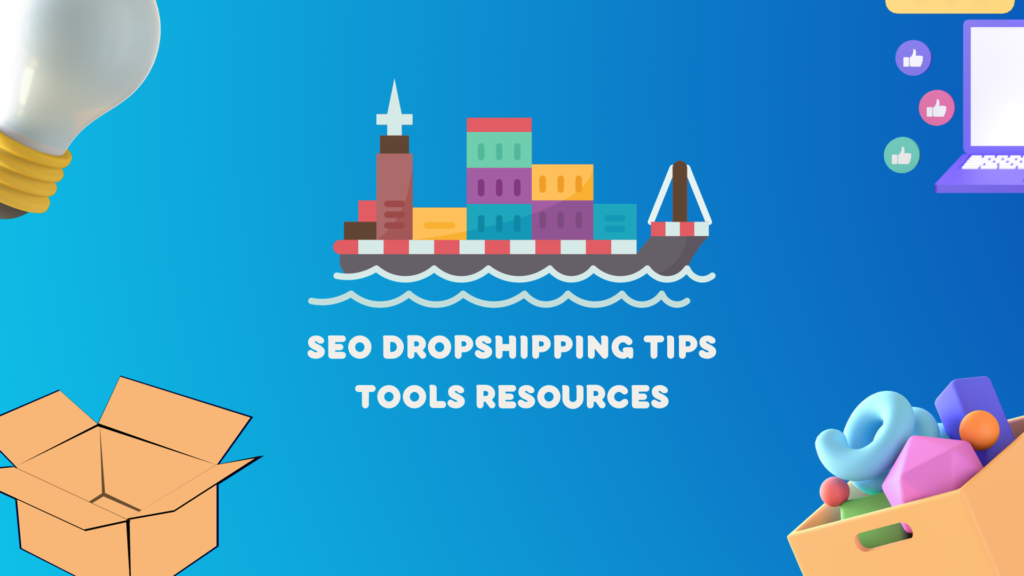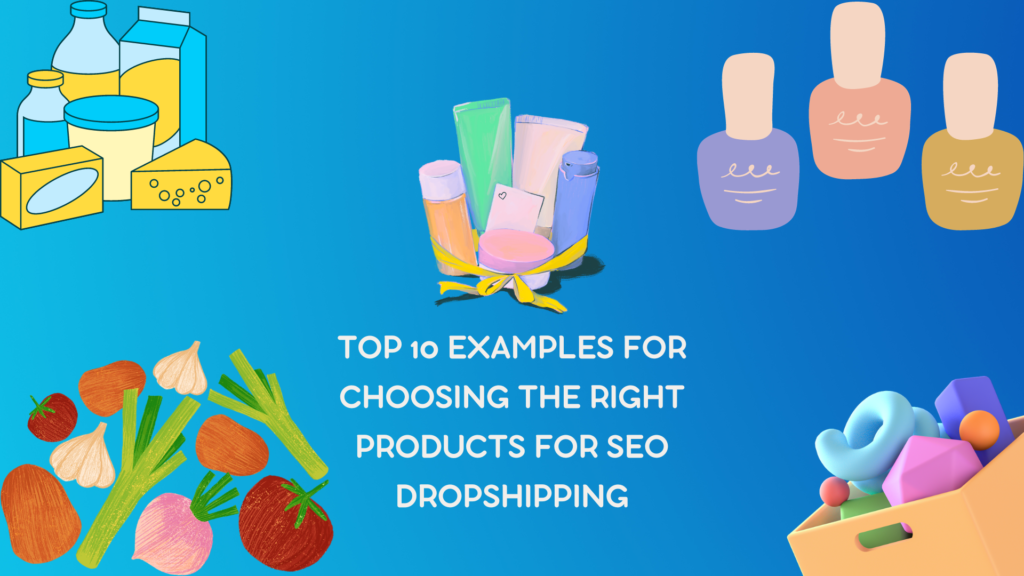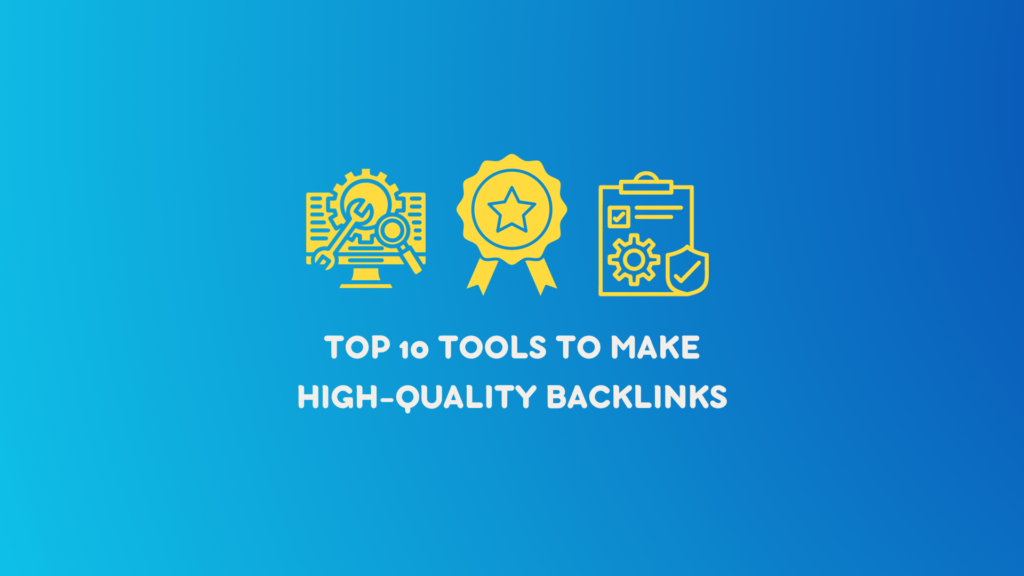Introduction to SEO Dropshipping
In today’s highly competitive online marketplace, finding innovative ways to boost sales is crucial for any business. One strategy that has gained significant traction is SEO dropshipping. But what exactly is SEO dropshipping? How can it help your business grow? In this article, we will explore the ins and outs of SEO dropshipping and provide you with valuable insights on how to master this technique for explosive online sales growth.

What is SEO Dropshipping?
SEO dropshipping is a business model that combines search engine optimization (SEO) techniques with the dropshipping method. Dropshipping is a fulfillment method where the retailer doesn’t keep the products they sell in stock. SEO dropshipping takes this a step further by leveraging SEO strategies to drive organic traffic to the online store, resulting in increased sales.
Advantages of SEO Dropshipping
- One of the key advantages of SEO dropshipping is the cost savings on inventory.
- SEO dropshipping offers a wide range of products without maintaining physical stock.
- It allows businesses to test different products and niches, enabling quick adaptation to market trends.
- SEO dropshipping allows for scalability without the limitations of traditional retail models.
- Consider market demand, competition, profit margins, and shipping logistics when choosing products for SEO dropshipping.
- Keyword research is crucial in identifying relevant keywords and improving search engine rankings.
- Optimize your website through keyword optimization, meta tags, website structure, site speed, mobile optimization, and quality backlinks.
- Leverage tools like Google Keyword Planner, SEMrush, Yoast SEO, Google Analytics, and SEO guides and tutorials for success in SEO dropshipping.
How SEO Dropshipping Works
SEO dropshipping works by optimizing the online store for search engines, such as Google, to drive organic traffic. This involves various strategies, including keyword research, on-page optimization, off-page optimization, and building high-quality backlinks. By implementing these techniques, the online store can rank higher in search engine results pages (SERPs), increasing its visibility to potential customers.
The first step in SEO dropshipping is choosing the right products to sell. It’s important to select products that have a high demand and low competition. Conducting thorough market research and competitor analysis can help identify profitable niches and products.
Choosing the Right Products for SEO Dropshipping
When choosing products for SEO dropshipping, it’s crucial to consider the demand and competition in the market. Look for products that have a high search volume but low competition. This will increase the likelihood of ranking higher in search engine results and attracting more organic traffic to your online store.
Additionally, consider the profit margins and shipping costs associated with the products. It’s essential to select products that offer a reasonable profit margin while keeping the shipping costs manageable. This will ensure that your business remains profitable while offering competitive prices to customers.
Top 10 Examples for Choosing the Right Products for SEO Dropshipping
When it comes to SEO dropshipping, choosing the right products is crucial for your success. Here are ten examples of key considerations to keep in mind when selecting products for your dropshipping business:

- Market Demand: Research the market to identify products that are in high demand. Look for products that have a consistent level of interest and are likely to attract a large customer base.
- Competition Analysis: Analyze the competition to understand what products are already being offered in the market. Look for gaps or areas where you can offer a unique product or differentiate yourself from competitors.
- Profit Margins: Consider the profit margins associated with the products you choose. Look for products that have a good balance between demand and profitability, ensuring that you can make a reasonable profit from each sale.
- Shipping Logistics: Evaluate the shipping logistics of the products you plan to sell. Consider factors such as shipping costs, delivery times, and the ability to ship internationally. Choose products that are easy to ship and won’t cause logistical challenges.
- Niche Selection: Focus on specific niches or product categories that align with your target audience. By narrowing down your niche, you can better understand your customers’ needs and preferences, allowing you to offer products that cater to their specific interests.
- Product Quality: Positive customer reviews and ratings can help build trust and credibility for your dropshipping business.
- Seasonality: Consider products that have consistent demand throughout the year to maintain a stable revenue stream.
- Product Variants: Look for products that offer different variants or options. This will allow you to cater to a wider range of customer preferences and increase your chances of making a sale.
- Supplier Reliability: Choose suppliers who are reliable and can consistently provide high-quality products. Establish a good relationship with your suppliers to ensure smooth order fulfillment and customer satisfaction.
- User Experience: Consider the overall user experience of the products you choose. Opt for products that offer a seamless and enjoyable customer experience, as this can lead to repeat business and positive reviews.
By considering these factors when choosing products for SEO dropshipping, you can increase your chances of success and build a profitable dropshipping business.
Keyword Research for SEO Dropshipping
Keyword research is a critical aspect of SEO dropshipping. It involves identifying the keywords and phrases that potential customers are using to search for products online. By targeting these keywords in your website content, product descriptions, and meta tags, you can increase your website’s visibility in search engine results.
Top 10 Tools for Keyword Research: Free and Paid

| Top 10 Tools | Plan | Details |
|---|---|---|
| Google Keyword Planner | Free | This tool from Google provides a wide range of keyword suggestions and search volume data. It is a great starting point for keyword research. |
| SEMrush | Paid | SEMrush offers a comprehensive suite of SEO tools, including keyword research. It provides in-depth keyword analysis, competition analysis, and other valuable insights. |
| Ahrefs | Paid | Ahrefs is a popular SEO tool that offers a powerful keyword research feature. It provides keyword ideas, search volume, difficulty scores, and competitor analysis. |
| Moz Keyword Explorer | Paid | Moz’s Keyword Explorer provides keyword suggestions, search volume data, and keyword difficulty scores. It also offers insights into organic click-through rates and SERP features. |
| Ubersuggest | Free and Paid | Ubersuggest is a user-friendly keyword research tool that provides keyword suggestions, search volume data, and competitor analysis. It offers limited features for free and more advanced features through a paid subscription. |
| KeywordTool.io | Free and Paid | KeywordTool.io generates keyword suggestions based on Google’s autocomplete feature. It provides search volume data, competition analysis, and keyword suggestions for various platforms. |
| Long Tail Pro | Paid | Long Tail Pro specializes in long-tail keyword research. It offers keyword suggestions, search volume data, and competition analysis to help you find low-competition keywords. |
| AnswerThePublic | Free | AnswerThePublic helps you discover the questions people are asking related to your keywords. It provides valuable insights into user intent and helps you create content that answers their queries. |
| SERPStat | Paid | SERPStat offers keyword research, competitor analysis, and rank tracking features. It provides keyword suggestions, search volume data, and valuable insights into the SERP landscape. |
| KW Finder | Paid | KW Finder is a user-friendly tool that offers keyword suggestions, search volume data, and competition analysis. It also provides valuable insights into long-tail keywords and SERP analysis. |
These tools can help you identify relevant keywords, analyze competition, and optimize your SEO strategy for better rankings and increased organic traffic. Choose the tool that suits your needs and budget, and leverage its features to boost your keyword research efforts.
On-page optimization for SEO Dropshipping
On-page optimization refers to optimizing the content on your website to improve its visibility in search engine results. By implementing on-page optimization techniques, you can ensure that your website is easily discoverable by search engines and attracts targeted organic traffic.
Start by optimizing your meta tags, including the title tag and meta description. These tags should include relevant keywords and accurately describe the content of the page. Additionally, optimize your headings by incorporating keywords and structuring them hierarchically (e.g., H1, H2, H3).
Off-Page Optimization for SEO Dropshipping
Off-page optimization includes building social media engagement, high-quality backlinks, and online reputation management. By implementing off-page optimization strategies, you can improve your website’s authority and credibility, resulting in higher search engine rankings.
Building High-Quality Backlinks for SEO Dropshipping
Building high-quality backlinks is essential for SEO dropshipping success. To start, identify authoritative websites in your niche and reach out to them for potential collaboration or guest posting opportunities. By providing valuable content to these websites, you can secure backlinks that will boost your website’s visibility and authority.
Another effective strategy for building backlinks is to leverage social media platforms. This can attract attention from other website owners and influencers who may be interested in linking to your content.
Top 10 Tools to Make High-Quality Backlinks
Here are ten websites and tools that can assist you in creating high-quality backlinks:

| Top 10 Tools | Details |
|---|---|
| Ahrefs | A comprehensive SEO tool that provides competitor analysis, keyword research, and backlink analysis. It helps you identify high-quality backlink opportunities and monitor your backlink profile. |
| Moz | Moz offers a range of SEO tools, including link building tools that can help you find relevant and authoritative websites for backlink opportunities. Their Link Explorer tool provides comprehensive backlink analysis. |
| SEMrush | Apart from being a renowned SEO tool, SEMrush offers features like backlink analysis, competitor research, and an extensive database of backlink opportunities. |
| BuzzStream | BuzzStream is a powerful outreach tool that helps you find and build relationships with influencers and bloggers for backlink opportunities. It streamlines the process of reaching out and managing your link-building campaigns. |
| HARO (Help a Reporter Out) | HARO connects journalists with sources, providing an opportunity for you to contribute expert advice and get high-quality backlinks from reputable news sites and publications. |
| Broken Link Builder | This tool helps you find broken links on websites in your niche. You can reach out to the website owners, inform them about the broken link, and suggest your content as a replacement, thus earning a backlink. |
| Guest Posting | Guest posting on relevant and authoritative websites is an effective way to build high-quality backlinks. Identify websites in your niche that accept guest posts and contribute valuable content to earn backlinks. |
| Quora | Quora is a popular question-and-answer platform where you can provide helpful answers related to your niche. By including a link to your website in your answers, you can drive traffic and earn backlinks. |
| Social Media | Utilize social, If your content is valuable and shareable, it can earn backlinks from social media users. |
| Skyscraper Technique | This technique involves finding popular content in your niche, creating a better and more comprehensive version, and reaching out to websites that are linked to the original content, suggesting they link to your improved version. |
Remember, building high-quality backlinks takes time and effort. Focus on creating valuable content and establishing relationships with relevant websites in your niche to earn quality backlinks that will benefit your SEO efforts.
Creating Compelling Product Descriptions for SEO Dropshipping
When it comes to SEO dropshipping, compelling product descriptions are crucial for converting visitors into customers. A well-crafted product description not only informs potential buyers about the product but also entices them to make a purchase. To create compelling product descriptions, follow these tips:
- Understand your target audience: Tailor your product descriptions to resonate with your target audience’s needs and desires. Use language that speaks directly to them and highlights the benefits of the product.
- Focus on unique selling points: Highlight the unique features and advantages of the product compared to competitors. This will help differentiate your product and convince potential buyers to choose your online store.
- Use persuasive language: Use persuasive language and storytelling techniques to evoke emotions and create a connection with potential buyers.
Top 10 AI Tools to Create Product Descriptions
Writing compelling and persuasive product descriptions is crucial for attracting customers and driving sales in the competitive world of e-commerce. Fortunately, there are several AI tools available that can help you create engaging and effective product descriptions. Here are the top 10 AI tools to create product descriptions:

- Writesonic: Writesonic is an AI-powered writing assistant that can generate high-quality product descriptions based on a few inputs. It uses natural language processing to understand your product and target audience and then generates unique and persuasive descriptions.
- Copy.ai: Copy.ai is an AI copywriting tool that can generate product descriptions, headlines, and other marketing copy. It uses advanced natural language processing algorithms to create persuasive and engaging content.
- Conversion.ai: Conversion.ai is an AI-powered writing tool that can assist you in creating compelling product descriptions. It uses a combination of machine learning and natural language processing to generate unique and persuasive content.
- ContentBot: ContentBot is an AI content generation platform that can help you create product descriptions that are tailored to your specific needs. It uses advanced algorithms to analyze your product and target audience and then generates descriptions that are both informative and persuasive.
- AdZis: AdZis is an AI-powered e-commerce content engine that can generate product descriptions, blog posts, and other content. It uses natural language processing and machine learning to create unique and engaging descriptions.
- WordSmith: WordSmith is an AI platform that can generate product descriptions and other marketing content. It uses natural language processing and machine learning to create content that is tailored to your specific needs.
- Phrasee: Phrasee is an AI-powered copywriting tool that can generate persuasive product descriptions and other marketing copy. It uses natural language generation algorithms to create content that is both engaging and effective.
- Articoolo: Articoolo is an AI content creation platform that can help you generate product descriptions that are informative and SEO-friendly. It uses advanced algorithms to analyze your product and target audience, and then generates unique and engaging descriptions.
- Contentyze: Contentyze is an AI content generation tool that can help you create product descriptions that are tailored to your specific needs. It uses natural language processing and machine learning to generate content that is both informative and persuasive.
- Textio: Textio is an AI-powered writing platform that can help you create product descriptions that are engaging and effective. It uses natural language processing algorithms to analyze your product and target audience, and then generates unique and persuasive content.
These AI tools can save you time and effort in creating compelling product descriptions. However, it’s important to review and edit the generated content to ensure it aligns with your brand voice and accurately represents your products.
Optimizing Product Images for SEO Dropshipping
In the world of e-commerce, product images play a crucial role in attracting customers and driving sales. Optimizing your product images for SEO dropshipping can significantly improve your website’s visibility and user experience.
- Use high-quality images: High-resolution images that showcase the product from different angles can help customers make informed purchasing decisions..
- Optimize image file names and alt tags: Rename your image files with descriptive keywords that accurately represent the product. Additionally, add alt tags to your images that provide alternative text for search engines to understand what the image represents.
- Compress image file sizes: Large image file sizes can slow down your website’s loading speed, negatively impacting user experience and search engine rankings.
Monitoring and Analyzing SEO Dropshipping Performance
Monitoring and analyzing the performance of your SEO dropshipping efforts is crucial for continuous improvement and growth. By tracking key metrics and analyzing the data, you can identify areas for optimization and refine your strategies.:
- Organic traffic: Monitor the number of visitors coming to your website through organic search. This metric indicates the effectiveness of your SEO strategies in driving organic traffic.
- Conversion rate: Track the percentage of visitors who purchase on your website. This metric helps assess the effectiveness of your product descriptions, website design, and overall user experience.
- Keyword rankings: Monitor your target keyword and website’s rankings search engine results. This metric indicates the success of your on-page and off-page optimization efforts.
Top 5 Monitoring Tools for SEO Performance
Monitoring your SEO performance is crucial to ensure that your website is ranking well in search engine results and attracting organic traffic. Here are the top 5 monitoring tools that can help you track and improve your SEO performance:
- Google Analytics: Google Analytics is a comprehensive web analytics tool that provides detailed insights into your website’s performance. It tracks various metrics such as website traffic, user behavior, conversion rates, and more.
- SEMrush: SEMrush is a powerful SEO tool that offers a wide range of features to track and improve your website’s performance. It provides detailed keyword analysis, backlink monitoring, competitor research, and site audit capabilities. With SEMrush, you can identify opportunities to enhance your SEO performance and stay ahead of your competition.
- Moz: Moz is a popular SEO software that offers a suite of tools to monitor and optimize your website’s performance. Its keyword research tool helps you identify relevant keywords to target, while its site audit feature analyzes your website for SEO issues and suggests improvements. Moz also provides backlink analysis and rank tracking capabilities to track your SEO progress.
- Ahrefs: Ahrefs is another comprehensive SEO tool that offers a range of features to monitor and improve your website’s SEO performance. It provides accurate keyword data, backlink analysis, competitor research, and rank tracking capabilities. Ahrefs also offers site audit features to identify and fix SEO issues that might be affecting your website’s performance.
- Google Search Console: Google Search Console is a free tool provided by Google that helps you monitor and maintain your website’s presence in Google’s search results. It provides valuable insights into how Google sees your website, including search queries that trigger your website’s appearance, click-through rates, and more. Google Search Console also alerts you to any issues that might be affecting your website’s performance in search results.
By regularly monitoring your SEO performance using these tools, you can identify areas for improvement, track your progress, and make data-driven decisions to optimize your website’s performance in search engine rankings.
SEO Dropshipping Tools and Resources
To excel in SEO dropshipping, it’s essential to leverage the right tools and resources. Here are some recommended tools and resources to help you master SEO dropshipping:
- Google Keyword Planner: A free keyword research tool provided by Google that helps identify high-volume keywords and provides insights into search trends.
- SEMrush: A comprehensive SEO toolkit that offers keyword research, competitor analysis, backlink analysis, and more.
- Moz: A suite of SEO tools, including keyword research, link building, and rank tracking, to help improve your website’s visibility and rankings.
- Shopify: An e-commerce platform that provides a user-friendly interface and a range of features for setting up and managing an online store.
Common SEO Dropshipping Mistakes to Avoid
While SEO dropshipping can be highly effective for online sales growth, there are common mistakes that businesses should avoid. These mistakes can hinder your website’s visibility and impact your overall success. Here are some common SEO dropshipping mistakes to steer clear of:
- Keyword stuffing: Overusing keywords in your website content can result in keyword stuffing, which is frowned upon by search engines. Focus on using keywords strategically and naturally to maintain a balance between optimization and readability.
- Ignoring mobile optimization: With the increasing use of mobile devices, it’s crucial to optimize your website for mobile users.
- Neglecting user experience: User experience plays a significant role in search engine rankings. A website that is difficult to navigate, has slow loading times, or contains broken links can negatively impact your rankings and conversion rates.
Conclusion
In today’s competitive online landscape, mastering SEO dropshipping can unlock explosive sales growth for your business. By combining dropshipping with effective SEO strategies, you can drive organic traffic to your online store, increase visibility, and attract targeted customers. Remember to choose the right products, conduct thorough keyword research, optimize your website for search engines, and build high-quality backlinks. By staying informed and leveraging the right tools and resources, you can achieve online sales growth that surpasses your expectations. So, what are you waiting for? Dive into the world of SEO dropshipping and watch your online sales soar!
FAQs About SEO Dropshipping
What is SEO dropshipping?
How can SEO dropshipping help my online business?
What are some common mistakes to avoid in SEO dropshipping?
Why is keyword stuffing frowned upon by search engines?
How important is mobile optimization in SEO dropshipping?
More FAQS
How does user experience affect search engine rankings?
What are some key considerations in choosing the right products for SEO dropshipping?
How important is keyword research in SEO dropshipping?
How can I optimize my website for search engines in SEO dropshipping?
What tools and resources can I leverage for SEO dropshipping success?
SEO Dropshipping Tips Tools Resources Free Guide Top 10 Tool. Manglastubh By Ankit Akolkar. Search on Google Free Online Courses.

Welcome to Manglastubh By Ankit Akolkar. Manglastubh website is designed and developed for all kinds of Knowledge-Based Blogs and Articles. Everyone will gain knowledge over here from this website.






